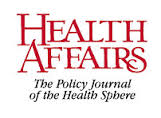NIH Launches Research on Health Disparities in Disadvantaged Communities
The National Institutes of Health is launching a new Transdisciplinary Collaboratives Centers for Health Disparities Research on Chronic Disease Prevention program that seeks to respond to
…the need for more robust, ecological approaches to address chronic diseases among racial and ethnic minority groups, under-served rural populations, people of less privileged socio-economic status, along with groups subject to discrimination who have poorer health outcomes often attributed to being socially disadvantaged. Two centers will focus their research efforts on development, implementation, and dissemination of community-based, multilevel interventions to combat chronic diseases such as heart disease, cancer and diabetes.
 Anticipated funding over the first five years of the program is approximately $20 million.
Anticipated funding over the first five years of the program is approximately $20 million.
In announcing the program, the NIH noted that
Heart disease, stroke, cancer, diabetes, and arthritis are among the most common, costly and preventable of all health problems. Many of these conditions disproportionately affect health disparity populations and in advanced stages can lead to significant limitations in activities of daily living.
These are the very health challenges that Pennsylvania’s safety-net hospitals tackle regularly – and far more often than the typical community hospital.
To learn more about what the program seeks to accomplish and the health challenges it anticipates addressing, see this NIH news release.








 The hospital faced a problem in addition to caring for Mr. G.
The hospital faced a problem in addition to caring for Mr. G.